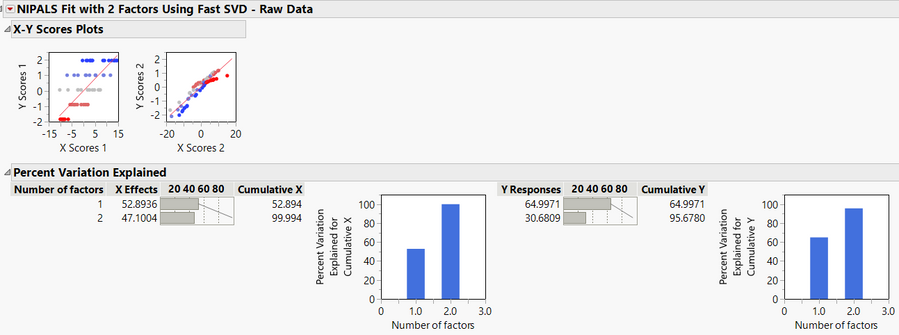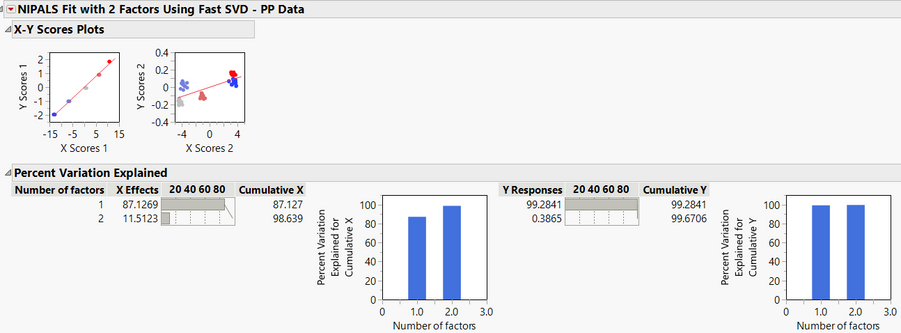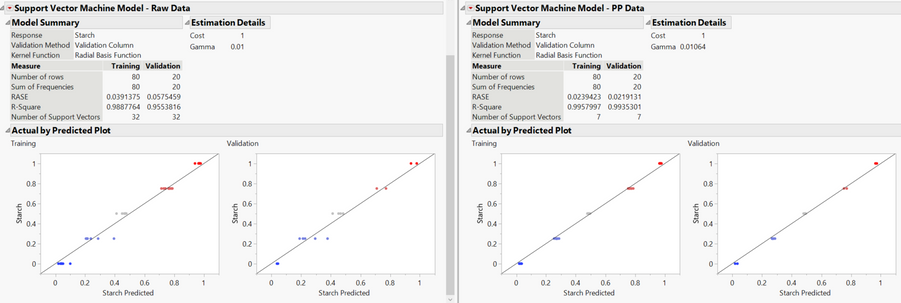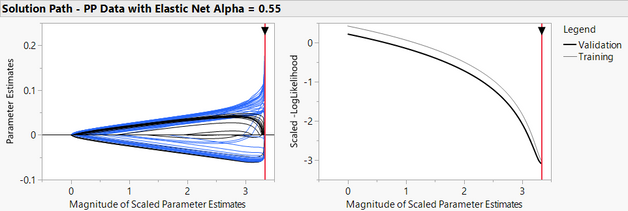- JMP will suspend normal business operations for our Winter Holiday beginning on Wednesday, Dec. 24, 2025, at 5:00 p.m. ET (2:00 p.m. ET for JMP Accounts Receivable).
Regular business hours will resume at 9:00 a.m. EST on Friday, Jan. 2, 2026. - We’re retiring the File Exchange at the end of this year. The JMP Marketplace is now your destination for add-ins and extensions.
JMP Blog
A blog for anyone curious about data visualization, design of experiments, statistics, predictive modeling, and more- JMP User Community
- :
- Blogs
- :
- JMP Blog
- :
- Analyzing spectral data: Modeling options
- Subscribe to RSS Feed
- Mark as New
- Mark as Read
- Bookmark
- Subscribe
- Printer Friendly Page
- Report Inappropriate Content
In our previous two blog posts, Jeremy Ash (@JeremyAshJMP) and I showcased JMP spectral analysis and visualization capabilities by analyzing a popular spectroscopy data set from Martens et al.1 We showed different ways to visualize spectral data and a few pre-processing steps that allowed us to dramatically improve the signal to noise ratio in the data for further analysis and modeling.
In this third segment of the blog series, we demonstrate several ways spectral data can be modeled in JMP. Partial Least Squares (PLS) is the most common tool for analyzing spectral data, and PLS can be done with both JMP and JMP Pro. JMP Pro also offers Elastic Net penalized regression, neural net modeling, and advanced decision tree methods like Bootstrap Forest.
The Bootstrap Forest and Elastic Net techniques allow for quickly and easily finding the most important wavelengths of individual compounds as well as the wavelengths that define components in mixtures. These modeling techniques can be used with raw data or processed data. In this post, Jeremy and I show the differences between modeling the raw data versus the pre-processed data to show the overall improvement in predictive capability after pre-processing. As a statement of clarity on the overall comparison of methods, the same two-level validation column was used with 20% of the data as the validation set for all analyses.
Modeling Methods
Partial Least Squares
Partial Least Squares is the standard method for analyzing spectra. PLS handles both wide and tall data and is especially good at handling highly correlated factors. This ability bodes well for spectra because spectral data often have highly correlated absorbances, which results in each successive wavelength being dependent on the one wavelength immediately before it. Because of this dependency, PLS is often used to analyze raw spectral data with very good results. As stated above though, pre-processing improves the resulting predictive model enough to warrant putting in the time and effort to pre-process the data. Remember that the sample data is a group of mixtures of gluten and starch, and in the case of PLS, it does a really good job of developing a model that predicts the gluten and starch ratios well with any future samples.
The PLS model was built with two latent factors because previous principal component analysis used two principal components. Also, Q2 does not improve much beyond two factors, and adding more factors makes model interpretation more difficult.




Below is a comparison of the Actual by Predicted Plot for both PLS models. The one on the left is for the raw data, and the one on the right is using the pre-processed data. As you can see, there is a significant improvement in the model using the pre-processed data.

Generalized Regression (Gen Reg)
Generalized Regression techniques are found in JMP Pro. Gen Reg gives you at least two things you will not get out of ordinary Least Squares. One is that with Gen Reg, your data doesn’t have to be normally distributed. You have options for many different types of distributions. Another difference is that Gen Reg includes the Penalized Regression technique, and it handles highly correlated data very well. Gen Reg provides Ridge, Lasso, and Elastic Net. Elastic Net is a nice compromise for modeling spectral data because you can adjust the Elastic Net Alpha (ENA) penalty to keep from underfitting a model by rejecting to many highly correlated factors as important to the model. The default value of 0.99 ENA was used to build an initial model. This model appeared to be rather sparse and potentially underfit. An advanced option in Gen Reg was used to scan the range of alpha values to see if there was a better model. This scan provided a better fit using an ENA value of 0.55. You can see the difference in the fit for the two ENA values in the solution paths below.




Without going into more detail, the fit for the raw data used 10 wavelengths when the Elastic Net Alpha (ENA) was 0.99 and 37 wavelengths when ENA was 0.55.
The pre-processed data has a significantly different outcome. Using Elastic Net again, there were 22 significant wavelengths found using an ENA of 0.99 and 53 significant wavelengths using an ENA of 0.55. While a large number, 37 and 53 of significant wavelengths identified with ENA of 0.55, both results are less than the PLS models by a large margin. Checking the fit statistics for both sets of models shows the pre-processed data to have the better overall predictive model. However, if you only used raw data, you would still be able to come up with a reasonably good predictive model.

A comparison of PLS and ELN models using processed data shows ELN models are only slightly better based on R2. However, the ELN models are simpler and easier to interpret.

Does that mean you should use Elastic Net models for all your spectral analysis? You should consider it as a viable candidate, but it really comes down to what modeling platform(s) you have available and whether model interpretability is desirable in addition to prediction performance.
More Modeling Options
Neural Net Models
For demonstration purposes, you can also use neural net models, which in this case show extremely good fits but are highly complex models.
However, the Prediction Profiler in JMP enables users to interpret even the most complex, nonlinear models. The Profiler can be overwhelming when all wavelengths are used for prediction. To keep the neural net model simpler, you can provide the wavelengths selected with Gen Reg in the model dialog.

In both cases, the data was fit with one hidden layer and three nodes with a hyperbolic tangent activation function using a fixed 20% validation column for cross-validation.
Bootstrap Forest
Using a Bootstrap Forest approach gives the most significant wavelengths for a given set of spectra. It is also a clear indication that pre-processing gives a much better model. The difference is based on the Validation R2 for each data set. The Validation R2 for the raw data is 0.805, and for the processed data the Validation R2 is 0.987. The models below were fit using a fixed 20% of the data as a validation set to avoid a random selection of the validation set.

Support Vector Regression
Support Vector Regression (SVR) modeling is also available in JMP Pro, and it is another good alternative for analyzing spectral data. SVR is a powerful and flexible boundary-based machine learning algorithm used to build predictive models for a continuous response. In the case of our data set, SVR also shows a significant improvement when analyzing processed data.

There are more modeling techniques in JMP and JMP Pro that you can use to model spectral data, so if you didn’t see one that you would like to use or have used, please let us know and we will make sure to cover it in a future blog post.
1) "Light Scattering and light absorbance separated by extended multiplicative signal correction. Application to near-infrared transmission analysis of powder mixtures" Analytical Chemistry 2003 Feb1;75(3):394-404
- © 2025 JMP Statistical Discovery LLC. All Rights Reserved.
- Terms of Use
- Privacy Statement
- Contact Us





You must be a registered user to add a comment. If you've already registered, sign in. Otherwise, register and sign in.